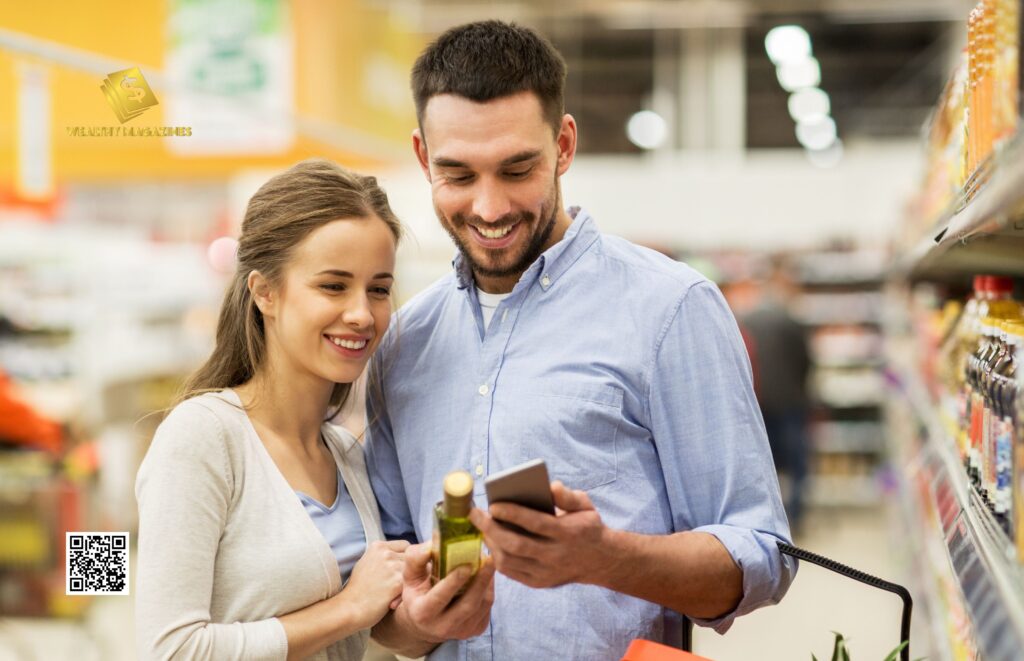In a rapidly digitizing world, you can effortlessly navigate to the nearest grocery store in a matter of seconds. Unlike the past when people had to invest a significant amount of time, energy, and resources and would use to travel just to locate grocery stores.
It is no longer a challenging task, thanks to the abundance of available tools that can assist you in swiftly identifying nearby grocery stores.

These tools are not used for a single purpose but you can easily locate many more of your needs i.e. banks, showrooms, shopping malls, restaurants, etc. Isn’t that phenomenal? In this article, we will explore how you can easily navigate to the nearest grocery store using location-based services and other worthwhile considerations.
Talking about an Evolution
Dating back, the COVID-19 pandemic accelerated the adoption of location-based services and navigation tools significantly. During this time, people turned to online shopping and delivery services to reduce their physical interactions.
Many innovative online stores and applications emerged, using location-based technologies to provide a smooth shopping experience right from the comfort of people’s homes. This evolution in consumer behavior not only ensured safety but also introduced a new era of convenience in grocery shopping.
Location-Based Services to Navigate to the Nearest Grocery Store
As the name suggests, location-based services utilize GPS technologies to help users navigate to their desired places or outlets easily. Popular navigation applications include Google Maps, Apple Maps, Waze, etc. To benefit from navigation apps, enable location services on your device. This ensures the app can accurately track your location and provide accurate directions.
In the coming lines, an overview of these sources is presented. However, the spoon-feeding approach is avoided as these apps are intuitive enough to let the users use them with ease.
Simple Google Search

The foremost option I will suggest is to simply google; “Navigate to the nearest grocery store”. Hopefully, you will find your desired results. However, there are some other options available that can be used alternatively to draw advanced results.
Exit Navigation: Google Enhancing the User’s Experience and Ensuring SafetyGoogle Maps
Whenever we think about navigating anything such as our desired destination, shopping outlets, institutions, banks, or any location, the first option that comes to our mind is Google Maps. With the help of it, you can also easily navigate to the nearest grocery store.
It traces your current location and presents you the personalized results so that you can easily find a solution to your problems regarding navigation. Google Maps also has a voice direction option which is yet another ease. It is available to users of any operating system.
Apple Maps
Apple Maps is also a location-based application that is used to navigate to the nearest grocery store. However, it is available to IOS and Mac users. In a broader spectrum, it has the same features as that of Google Maps.
Waze
Waze is a navigation app that uses crowd-sourced data (as in the case of Yelp) to help users find the quickest route to the nearest grocery store. Additionally, it alerts users about traffic incidents and suggests alternative routes. Waze also collaborates with state agencies to include data on road construction. The more users contribute, the more accurate and reliable Waze becomes.
Yelp
Yelp.com is an American site that also can be used to navigate to the nearest grocery stores, shopping malls, restaurants, supermarkets, etc. Additionally, it publishes crowd-sourced reviews about products and stores which is crucial in making informed decisions.
Grocery Outlet Store Locator
With the store locator feature offered by Grocery Outlet, which also has Google Maps as a backbone, you can effortlessly navigate to the nearest grocery store for your shopping needs.
A Closer Look at IFVOD TVConsiderations for a Safe and Convenient Shopping Experience
Parking Facilities
Evaluate parking availability and any associated restrictions near the chosen grocery store. Some stores may have designated parking spots or reserved areas for disabled individuals or families with young children. Utilizing these options, when available, can enhance convenience.
Store Accessibility
Consider the store layout and if it accommodates individuals with disabilities or those using mobility aids. Check if there are wheelchair ramps, elevators, or wide walkways for comfortable navigation. Proximity to public transportation stops is another aspect to consider, especially if you rely on buses or trains for commuting.
Store Services and Facilities
Analyze the available services and facilities offered by the grocery store. Consider if they provide services like kerbside pickup or home delivery, which can save you time and effort. Additionally, assess the presence of facilities like restrooms or charging stations to cater to your needs during the shopping trip.
Conclusion
In today’s digital age, it is easy to find the nearest grocery store using location-based tools as discussed earlier. These tools can also help you find other necessities, such as banks, showrooms, shopping malls, restaurants, etc. Online stores and applications are also making grocery shopping more convenient. When choosing a grocery store, however, consider factors such as parking, accessibility, and available services.
Contact us at Gmail



